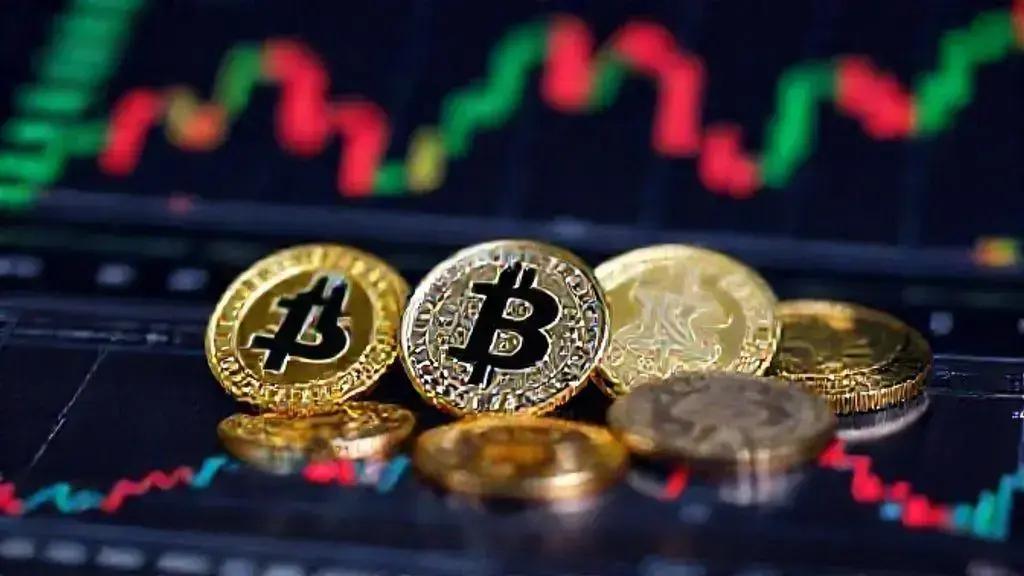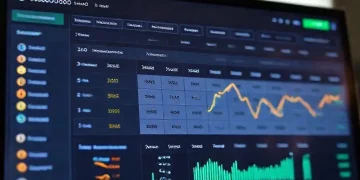Altcoin investment opportunities that can boost your portfolio

Altcoin investment opportunities provide potential for high returns and diversification, but they also come with significant risks, including volatility and market uncertainty.
Altcoin investment opportunities are often overlooked by many investors, but they can offer significant growth potential. Have you ever considered how diversifying your portfolio with altcoins might change your investment journey? In this article, we’ll dive into key altcoin insights you won’t want to miss.
Understanding altcoins and their potential
When it comes to exploring altcoin investment opportunities, understanding the basics of altcoins is crucial. Altcoins are all cryptocurrencies other than Bitcoin, and they offer various features and functionalities. With the rise of digital currencies, many investors are turning their attention to these alternatives, hoping to find the next big cryptocurrency.
Altcoins can be classified into different categories based on their use cases and how they operate. Some are designed for specific applications, while others aim to improve upon the limitations of Bitcoin. For instance, Ethereum enables smart contracts and decentralized applications, while Litecoin focuses on faster transaction times.
Types of Altcoins
There are several major types of altcoins you should be aware of. Each type comes with its unique benefits and uses:
- Utility Tokens: These tokens provide access to specific services or products within a blockchain ecosystem.
- Stablecoins: These are pegged to real-world assets, offering stability and less volatility compared to other cryptocurrencies.
- Security Tokens: Representing ownership of an asset, these tokens are often subject to regulations and provide certain rights.
- Forks: These occur when a blockchain splits into two separate paths, leading to the creation of a new coin.
Understanding these categories can help investors identify potential altcoin investment opportunities that align with their goals. It’s also important to research the technology behind these coins. An innovative technical foundation can indicate a project’s potential for long-term success.
One fascinating aspect of altcoins is their ability to solve specific problems. For example, Chainlink connects smart contracts to real-world data, enabling more complex and useful applications. This capability can lead to partnerships and broader adoption, ultimately enhancing the value of the associated altcoin.
Moreover, the community and development behind an altcoin play a significant role in its potential. Projects with strong communities tend to have better support and more frequent updates, which can drive their growth. Following development updates, community discussions, and market trends can provide insights into which altcoins might offer promising investment opportunities.
Top altcoin investment strategies
Exploring top altcoin investment strategies can significantly enhance your portfolio and result in better returns. Since the cryptocurrency market is highly volatile, it’s essential to have a clear approach to investing in altcoins. Let’s dive into some effective strategies.
Diversification of Your Investments
Diversifying your investments is one of the most effective strategies. By investing in multiple altcoins, you can spread risk and increase your chances of capturing gains. It’s wise not to put all your funds into one altcoin, as this could lead to significant losses if that coin underperforms.
- Consider a mix of established altcoins and emerging projects.
- Allocate a percentage of your portfolio to each coin based on its market potential.
- Monitor your holdings regularly to adjust your investments.
Another key factor is timing. Understanding market cycles can impact your investment success significantly. Buying during a dip can provide better entry points, while selling during a rally can secure profits. Keeping an eye on market trends and sentiment helps inform your decisions.
Research and Due Diligence
Conducting thorough research before investing is crucial. Familiarize yourself with the altcoins you are considering. Check their whitepapers, roadmaps, and the technology behind them. An altcoin’s team and community can also signal reliability and potential success.
- Identify partnerships that may enhance the altcoin’s adoption.
- Review recent news and updates related to the altcoin.
- Join forums or community discussions to gain insights from other investors.
Risk management is another critical aspect of investing in altcoins. Set clear limits on how much you’re willing to invest and stick to them. It’s also beneficial to use tools like stop-loss orders to minimize your risk in case market conditions worsen.
Risks and rewards of investing in altcoins

Investing in altcoins presents both risks and rewards, making it essential for investors to evaluate these factors carefully. The appeal of potential high returns draws many to consider altcoins. However, understanding the risks involved can protect your investment.
Potential Rewards
Altcoins often provide opportunities for substantial returns in a relatively short time. Many investors are attracted to lesser-known altcoins because they can offer growth possibilities that Bitcoin may not. In addition, the altcoin market can experience rapid price surges, especially with new projects gaining popularity.
- High growth potential: Early investments in successful altcoins can result in significant profits.
- Diverse portfolio: Adding altcoins allows for greater diversification, which can lead to overall portfolio growth.
- Innovation: Many altcoins focus on innovative technologies that can solve real-world problems.
Furthermore, participating in emerging projects can also lead to unexpected rewards as these projects often introduce unique use cases and applications, which can resonate well with the market.
Inherent Risks
On the flip side, the risks associated with altcoin investments are equally noteworthy. The crypto market can be highly volatile, leading to drastic price fluctuations that can result in losses.
- Lack of regulation: The altcoin market is less regulated than traditional markets, leading to potential fraud.
- Market volatility: Prices can swing dramatically due to market sentiment, news, or changes in technology.
- Project failure: Many altcoins don’t succeed, and investing in these can lead to total loss of capital.
Additionally, it’s essential to consider the technology behind an altcoin. Not every project will succeed, and the lack of strong community support can lead to a decline in interest and funding, jeopardizing its future.
In short, while there are exciting rewards when investing in altcoins, one must also be aware of the risks and conduct thorough research before making any investment. Balancing ambition with caution can lead to a more successful investment strategy.
How to research altcoins effectively
Researching altcoins effectively is key to making informed investment decisions. With many options available, understanding how to evaluate them can lead to successful outcomes. One of the first steps is to look closely at the project’s whitepaper. This document outlines the goals, technology, and use cases of the altcoin. It’s your roadmap to understanding what the project hopes to achieve.
Evaluating the Team Behind the Project
The team behind an altcoin can greatly influence its success. Investigate the backgrounds of the key players involved. Look for their experience in the cryptocurrency field or technology. A strong team often indicates a commitment to the project’s vision.
- Founders: Research their previous work and successes in the industry.
- Development team: Check if they have proven skills and relevant expertise.
- Advisors: See if they have a reputable advisory board to guide the project.
In addition to the team, analyzing community engagement is crucial. An active and passionate community often supports an altcoin, which can lead to broader adoption. You can join online forums, social media channels, or groups to see how engaged community members are. A healthy discussion can provide insights into the project’s direction and stability.
Market Trends and Competitors
Understanding the market conditions that may affect an altcoin is also important. Check its place within the broader cryptocurrency ecosystem. How does it compare to similar projects? What sets it apart? Comparing altcoins can help identify their strengths and weaknesses.
- Market cap: A higher market cap generally indicates stability.
- Trading volume: Look for consistent trading activity as it suggests investor interest.
- Competitors: Identify competitors and analyze their advantages and disadvantages.
Finally, stay updated with news and changes in regulations. Cryptocurrency is a fast-moving space, and being aware of external factors can protect your investments. Following reputable news sources and market analysis will keep you informed about any developments that could impact altcoins.
Future trends in the altcoin market
The future trends in the altcoin market are expected to shape the investment landscape significantly. As technology evolves, so does the way investors approach altcoins. A crucial trend is the growing interest in decentralized finance (DeFi) applications. DeFi platforms allow users to lend, borrow, and trade assets without traditional intermediaries, increasing accessibility for many investors.
Emergence of New Technologies
Another trend to watch is the introduction of new technologies. Blockchain innovations, such as proof of stake and sharding, aim to improve transaction speeds and security. Altcoins that adopt these technologies may offer better functionality and attract more users.
- Layer 2 Solutions: These aim to reduce congestion on the main blockchain, leading to faster transactions.
- Interoperability: Altcoins that can communicate across different blockchains will likely gain more traction.
- Smart Contracts: Enhanced smart contract functionality can create more complex and useful applications.
Additionally, regulatory changes will play a key role in the future of altcoins. As governments develop clearer regulations for cryptocurrencies, it may encourage more mainstream adoption. Investors who stay informed about these regulations can make better decisions about their altcoin investments.
The Rise of NFTs and Metaverse Coins
Non-fungible tokens (NFTs) and metaverse coins are also becoming significant players in the altcoin space. As more people engage with digital art and virtual worlds, altcoins that support these technologies may see increased demand. For example, platforms that facilitate NFT trading or virtual property ownership may become increasingly popular.
- Marketplace Growth: NFT marketplaces are expanding, leading to more opportunities for creators and investors.
- Social Engagement: Coins related to metaverse platforms are gaining community support, driving adoption.
- Integration with Gaming: Many metaverse projects are combining gaming with cryptocurrency, attracting a broader audience.
Finally, environmental concerns are prompting altcoins to focus on sustainability. Projects that implement eco-friendly practices may appeal more to socially conscious investors. The shift toward greener alternatives could redefine investor preferences over time.
FAQ – Frequently Asked Questions about Altcoin Investment
What are altcoins?
Altcoins are any cryptocurrencies other than Bitcoin. They often serve different purposes and can offer unique features.
How do I start researching altcoins?
Begin by reading the altcoin’s whitepaper, checking the team’s background, and evaluating market trends.
What are the main risks of investing in altcoins?
The main risks include high volatility, potential fraud, and the possibility of project failure.
Why should I consider investing in altcoins?
Investing in altcoins can provide high growth potential and diversification for your investment portfolio.





